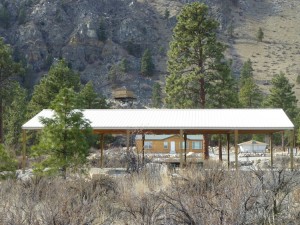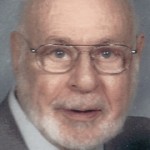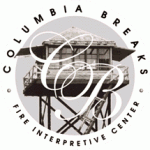Welcome to the Listening Post at Columbia Breaks Fire Interpretive Center. We are a non-profit, all volunteer organization. Our general goal is to provide wildfire education in as many formats as possible. This Listening Post project is the beginning of an endeavor that will expand as we collect the stories of individuals connected to wildland fire. Our first stories (below) will deal with the experiences of fire lookouts – a slowly dying profession. columbiabreakswildfire.com
 Columbia Breaks Fire Interpretive Center is located at the north side of the town of Entiat, Washington on Hwy 97A (between Wenatchee & Chelan). You will see a lookout tower on the west side of the highway, plus two rustic signs with gold print on each side of the entrance. Proceed to the parking area in front of a building with log-cabin siding, which is next to a white fire lookout. A half-mile interpretive “Trail of Fire and Forest” begins at the parking lot. The trail is open year round.
Columbia Breaks Fire Interpretive Center is located at the north side of the town of Entiat, Washington on Hwy 97A (between Wenatchee & Chelan). You will see a lookout tower on the west side of the highway, plus two rustic signs with gold print on each side of the entrance. Proceed to the parking area in front of a building with log-cabin siding, which is next to a white fire lookout. A half-mile interpretive “Trail of Fire and Forest” begins at the parking lot. The trail is open year round.
The interpretive building and two fire lookouts are open and hosted from Friday to Sunday between Memorial Day and Labor Day. A video on the life of a modern day lookout is also available for viewing. For special visits, call 509-670-4875. There is also a shelter for picnics and an amphitheater for public events.
Stories
Most of the time, lookouts have a fairly tranquil life watching for forest fires, performing daily chores, and visiting hikers. However, that slow, peaceful lifestyle can be punctuated with an occasional lighting storm that can literally scare a novice off the mountain. Listen, as these former lookouts describe their experiences with elecrical storms.

 Listen to Dick Slagle of Republic WA. In the summer before his last year of college in 1942 he was asked to work in the White Mountain Lookout in the Kettle Range of Washington state.
Listen to Dick Slagle of Republic WA. In the summer before his last year of college in 1942 he was asked to work in the White Mountain Lookout in the Kettle Range of Washington state.
[audio:http://gatheringourvoice.org/wp-content/uploads/2012/05/Dick_Slagle_Finished_Product.mp3|titles=Dick Slagle ]Dick Slagle (MP3)
 Listen to Milt Barton who now lives in upstate New York. He was only 16 years old when he first served on the Fog Mountain lookout in Idaho, near the Frank Church Wilderness area in 1942.
Listen to Milt Barton who now lives in upstate New York. He was only 16 years old when he first served on the Fog Mountain lookout in Idaho, near the Frank Church Wilderness area in 1942.
[audio:http://gatheringourvoice.org/wp-content/uploads/2012/05/Finished_Product_Milt_Barton_3.mp3|titles=Milt Barton]Milt Barton (MP3)
In the audio clip, Milt Barton talks about his experience with St. Elmo’s fire – how it rolled off the roof of the lookout and appeared as balls of light in his lookout. Conditions that can generate St.Elmo’s fire are present during thunderstorms, when high voltage levels are present between clouds and the ground underneath. Air molecules glow due to the effects of such voltage, producing St. Elmo’s fire. The combination of gases in the atmosphere causes them to glow a blue to violet to greenish color. Once the electric charge dissipates, the “fire” vanishes.
Milt Barton spent most of his youth growing up in North Central Idaho, living in LoLo which had a population of 50 — and going to school in Kooskie with a population of 400. His father helped build highway 12 over LoLo pass between Idaho and Montana. Because of men going to fight in World War II, there was a worker shortage in the area. The U.S. Forest Service recruited high school students to work for them. Milt was selected to work in the Fog Mountain Lookout in the summer of 1942 – he was only 16 years old. The lookout was in the Selway River region of the Nez Perce National Forest – bordering the Selway-Bitteroot Wilderness and the Frank Church Wilderness areas. He also worked as a surveyor on the Manhattan Project in Richland Washington. When he was old enough, he enlisted in the U. S. Navy for a couple years. He returned to Idaho, worked in the lookout for another summer, and then finished an electrical engineering degree at the University of Idaho. He spent the next 42 years working around the world for General Electric, ending up in Schenectady, New York.
